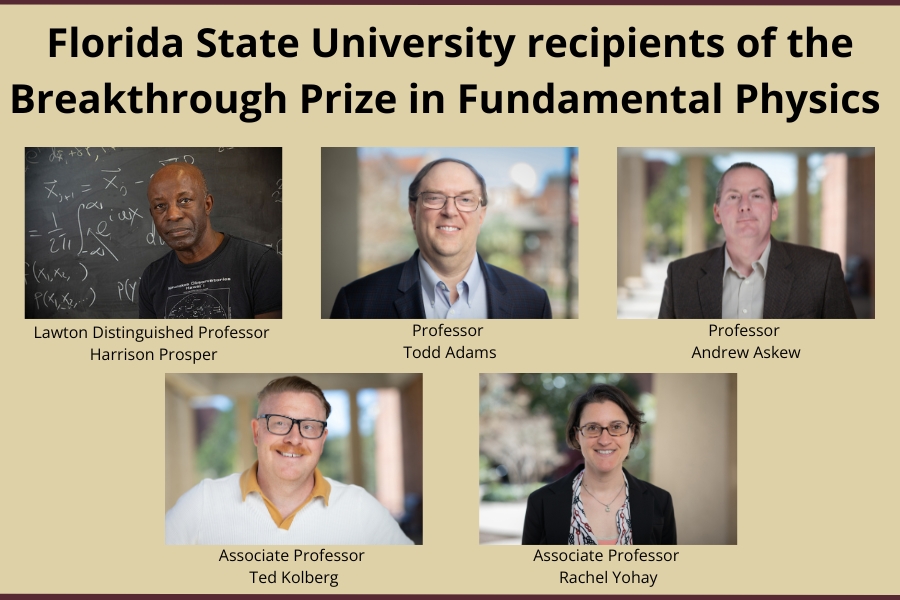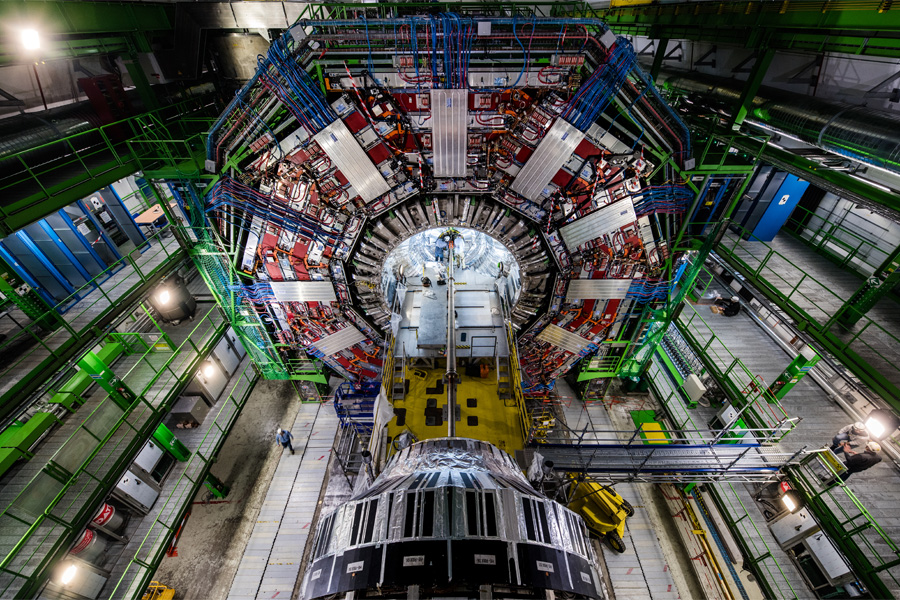Five Florida State University physicists are part of the international team awarded the Breakthrough Prize in Fundamental Physics for work done at the European Organization for Nuclear Research (CERN), the world’s largest particle physics laboratory.
FSU physics faculty members Harrison Prosper, Todd Adams, Andrew Askew, Ted Kolberg and Rachel Yohay are among the researchers from four collaborations studying particle physics at the Large Hadron Collider (LHC), the world’s largest and most powerful particle accelerator, who were chosen to receive the prize, from the Breakthrough Prize Foundation, in recognition of work done during a phase of the LHC experiment referred to as “Run-2.”

The five FSU faculty members conducted research as part of a scientific collaboration using the compact muon solenoid, or CMS, a detector that allows researchers to identify the nature of proton collisions inside the LHC, informing new discoveries about physics at the most fundamental level. The CMS collaboration is one of four LHC experiments honored by the prize. The CMS team was allocated $1 million of the prize’s total $3 million monetary award and, in total, 13,508 physicists from more than 70 countries took part in the research.
“The ‘Run-2’ data set from 2015 to 2018 confirmed that the particle discovered during Run-1 was the Standard Model Higgs boson,” said Yohay, an associate professor in the Department of Physics. “The Breakthrough Prize awards the collective work completed by four collaborations, including CMS, that went into making those measurements, from calibrating the detectors to analyzing the data.”
The LHC, located on the border of France and Switzerland, began operations in 2010 to allow physicists to study matter at the highest achievable energies. During “Run-1,” from 2010-2012, scientists, including Prosper, discovered the Higgs boson, a particle that proved the longstanding theory that there is a quantum field that gives all particles mass. The tests conducted during “Run-2” have led to a clearer understanding of the Higgs boson.

“All indications thus far show us that the Higgs boson aligns with the particle proposed in the 1960s, but future discoveries may indicate something different,” said Kolberg, associate professor in the Department of Physics. “I’m interested in looking at the fine details of how the Higgs is produced. At the CMS collaboration, we are constantly making the experiment better, both in our analysis and upgrades to the hardware, to make fine distinctions between our hypotheses and the reality of the universe we live in.”
After consulting with each LHC collaboration team, the Breakthrough Prize Foundation pledged to donate the entirety of the $3 million prize money to the CERN and Society Foundation, which will fund grants to allow doctoral students to conduct research at CERN. Yohay and Kolberg, who both began their work at CERN as doctoral students, see this as a fitting use of the funds.
“Most of the work is done by our most junior members. The students are able to dedicate themselves fully to the experiment,” Kolberg said. “It’s very appropriate that the winnings from this prize will be dedicated to those students and make it easier for them to come to CERN and work on the experiment.”
More than two dozen current or prior FSU faculty members, postdoctoral researchers, and graduate students who took part in the LHC collaboration were also recognized as part of the Breakthrough Prize. The LHC experiment, now in “Run-3,” has more to reveal about particle physics, and the CMS collaborators at FSU are looking forward to making new discoveries alongside their colleagues.
“I hope we discover the standard model is incomplete and that we have a better understanding of the Higgs boson with the analyses made from ‘Run-3’ of the LHC,” Yohay said.
To learn more about High Energy Experimental Physics research at FSU, visit physics.fsu.edu/research/high-energy-experimental-physics.





